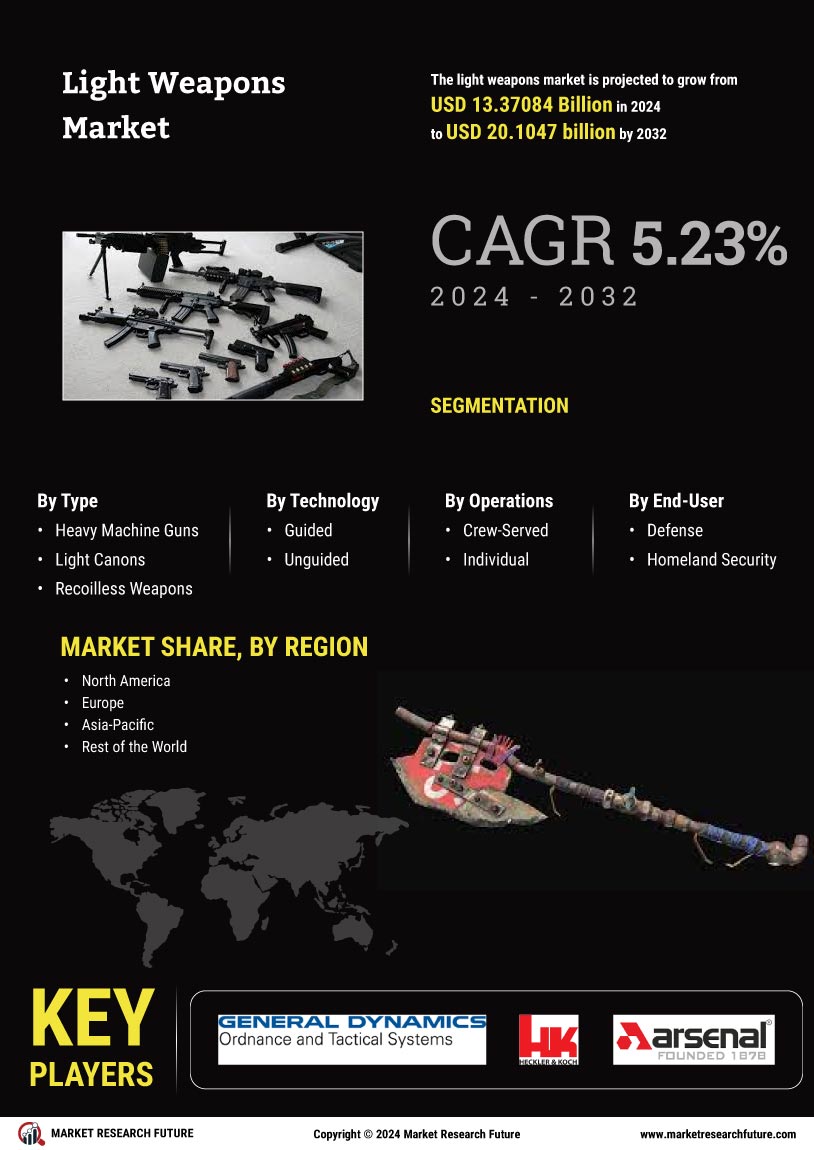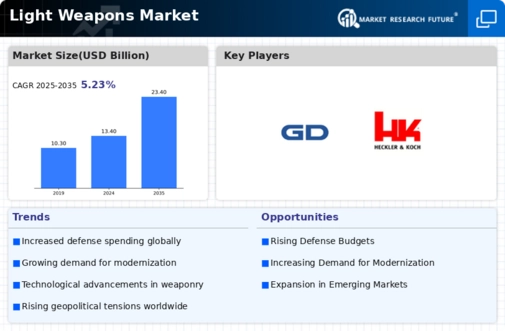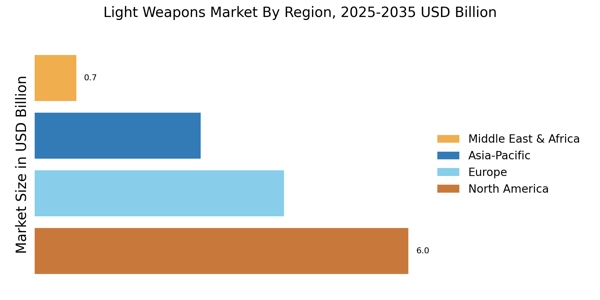Growing Civilian Demand
The Light Weapons Market is witnessing a growing demand from civilian sectors, including law enforcement and private security firms. As concerns over public safety and security escalate, there is an increasing need for effective light weapon systems for non-military applications. Recent statistics reveal that the market for civilian light weapons has expanded by nearly 4% annually, driven by the rising prevalence of crime and terrorism. This trend indicates that manufacturers in the Light Weapons Market may find new opportunities for growth by diversifying their product offerings to meet the needs of civilian customers. Additionally, partnerships with law enforcement agencies could further enhance market penetration and brand visibility.
Increased Defense Budgets
The Light Weapons Market is experiencing a notable surge in defense budgets across various nations. Governments are prioritizing military modernization, which includes the procurement of advanced light weapons. For instance, recent reports indicate that defense spending in several countries has increased by an average of 3-5% annually. This trend is driven by the need to enhance national security and respond to emerging threats. As a result, manufacturers in the Light Weapons Market are likely to benefit from increased orders and contracts, leading to a more competitive landscape. The focus on lightweight, portable weapon systems is particularly pronounced, as military forces seek to improve operational efficiency and effectiveness in diverse combat scenarios.
Rising Asymmetric Warfare
The Light Weapons Market is significantly influenced by the rise of asymmetric warfare, where non-state actors and insurgent groups utilize light weapons to counter conventional military forces. This shift in warfare dynamics has led to an increased demand for lightweight, easily deployable weapon systems. Analysts suggest that the proliferation of such conflicts has prompted governments to invest in advanced light weapon technologies to equip their forces adequately. The market for light weapons is projected to grow as military organizations adapt to these unconventional threats. Furthermore, the need for effective counterinsurgency strategies is likely to drive innovation within the Light Weapons Market, as manufacturers develop new solutions tailored to the unique challenges posed by asymmetric warfare.
Technological Innovations
Technological advancements are reshaping the Light Weapons Market, with innovations enhancing the performance and capabilities of light weapon systems. The integration of smart technologies, such as advanced targeting systems and improved materials, is becoming increasingly prevalent. For example, the introduction of lightweight composite materials has allowed for the production of more efficient and durable weapons. Market data indicates that the segment of smart light weapons is expected to grow at a compound annual growth rate of approximately 6% over the next five years. This trend suggests that manufacturers who invest in research and development will likely gain a competitive edge in the Light Weapons Market, as they cater to the evolving needs of modern military forces.
International Arms Trade Agreements
The Light Weapons Market is significantly impacted by international arms trade agreements and regulations. These agreements often dictate the flow of light weapons across borders, influencing market dynamics. Recent developments in arms control treaties and export regulations have created both challenges and opportunities for manufacturers. For instance, countries that engage in arms trade are required to adhere to strict compliance measures, which can affect the availability of light weapons in certain regions. However, this regulatory environment also encourages manufacturers to innovate and develop compliant products. As nations navigate these complexities, the Light Weapons Market is likely to see shifts in demand patterns, with manufacturers adapting to the evolving landscape of international arms trade.


















Leave a Comment